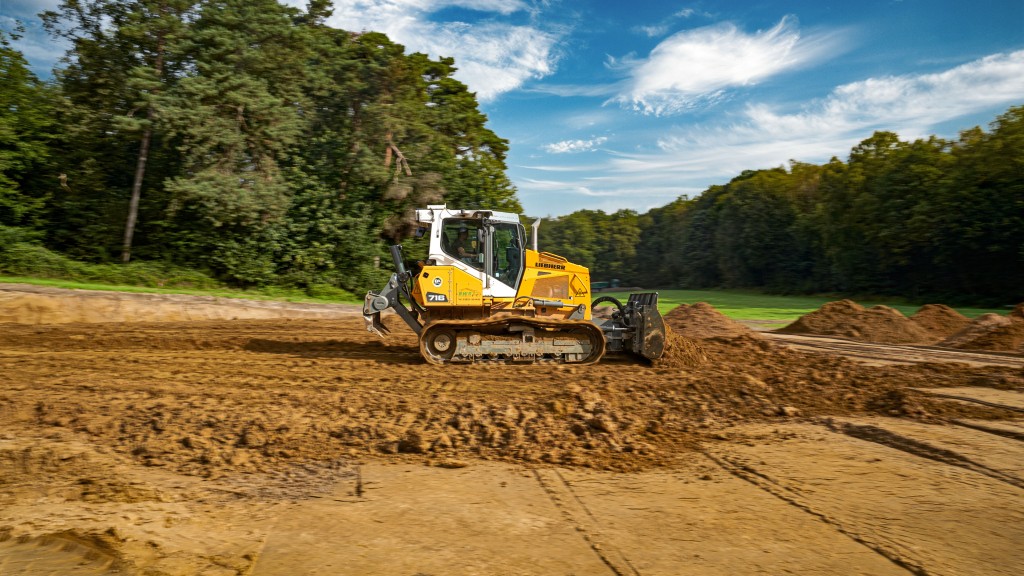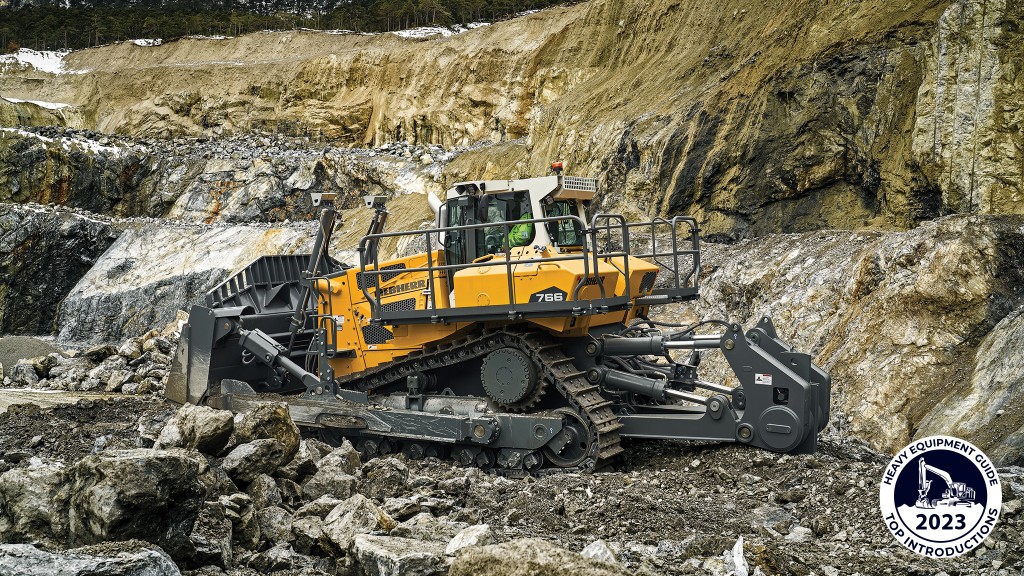
BWR Schermbeck is one of the most recognizable wind park construction companies in Germany. They have consistently grown over 25 years and have gathered the knowledge to succeed.
Cranes are, rightly so, the face of wind power installation. They lift the mast, nacelle, blades, and other components into the air – often in windy conditions – so that renewable power can be generated. But there is another machine that plays a role that is just as important: crawler dozers. These machines do the groundwork to make sure that wind farms can operate at full capacity.
Liebherr crawler dozer brings efficient operation
BWR was recently involved in the construction of a 5.6 MW wind turbine in Haltern (North Rhine-Westphalia) where they used a Liebherr PR 716 crawler dozer for the initial development of the site and construction of the installation platform area along with the access roads and paths.
BWR prioritizes efficient operation and high performance when choosing the dozer. "With such low fuel consumption and high thrust both at the same time, there is simply nothing on the market to match this crawler dozer," explains Dirk Bleker, managing director of BWR Schermbeck.
Marc Hüfing, foreman of the earthmoving department at BWR Schermbeck, confirms the abilities of the PR 716. In 2023, Liebherr says that the average consumption of the company's crawler dozer is below the fleet average of 9.3 l/h for all PR 716 crawler dozers, a fact recorded in Liebherr's fuel economy calculator. THe fleet value is based on a total of over 700,000 operating hours, recorded by LiDat, for this class of machine alone.
Bleker also points out that the dozer is ideal for use on any surface. Whether it is on clay or sand, the machines are great to operate. Due to its compact size, the PR 716 also comes into its own in tight spaces. A further plus is the ease of access to all construction sites as the machine can be transported on a semi-low loader.
BWR also aims to make sure that its workers and operators are safe and comfortable when on the job site. Liebherr's Silent Design is a noise reduction package that promotes operator well-being during harsh operations.
Assistance system helps with complex grading
In times of increased cost pressure, quick and precise operation plays a critical role. Liebherr's Generation 8 crawler dozers offer three levels of assistance systems for optimum cost-effective site operation: Free Grade for active blade stabilization during fine grading, Definition Grade for automatic blade positioning when creating 2D surfaces, and 3D Grade for complex terrain modelling.
Hüfing emphasizes the important and supportive role played by the assistance systems in completing grading tasks. As he explains, the assistance systems allow for extremely precise path guidance and optimum adjustment and compliance with the gradient. When creating water courses, Definition Grade significantly simplifies the process while saving time and resources. Further advantages include the intuitive operation of the assistance systems and the high quality of the grading work.
Hüfing continues to say that the strengths of these systems come to the forefront in forested areas that are often found with wind farms. As site-clearing work needs to be kept to a minimum, the machine almost always works at the tree line where satellite reception is often disrupted. In creating all the wind farm areas, such as the installation platform area for the crane, exact alignment and high precision are required. BWR found that this was an ideal use for Definition Grade. Fitted as standard ex works, it allows precise surfaces with defined longitudinal grade and cross slope to be created even without satellite support.
"We can no longer imagine our company without the PR 716 crawler dozer," emphasizes Bleker.
Company info
1015 Sutton Drive
Burlington, ON
CA, L7L 5Z8
Website:
liebherr.com/en/can/about-liebherr/liebherr-worldwide/canada/liebherr-in-canada.html



